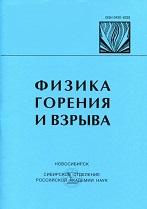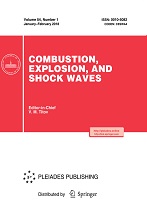|
This article is cited in 6 scientific papers (total in 6 papers)
Effects of various compositions of the fuel-air mixture on the pulse detonation engine performance
N. Alam, K. K. Sharma, K. M. Pandey
Department of Mechanical Engineering, National Institute of Technology Silchar, Silchar, Assam, 788010, India
Abstract:
The objective of the present analysis is to investigate the effect of gaseous hydrocarbon fuels, such as Octane C$_8$H$_{18}$, Hexane C$_6$H$_{14}$, and Pentane C$_5$H$_{12}$ on the cyclic combustion process in an obstructed channel of the pulse detonation engine. Three-dimensional reactive Navier–Stokes equations are used to simulate the combustion mechanism of stoichiometric hydrocarbon fuels along with a one-step reaction model. The fuel is injected at atmospheric pressure and temperature and is ignited with pre-heated air. The investigation shows that initially a high-temperature combustion wave propagates with the local speed of sound; it creates turbulence after colliding with obstacles, resulting in an increase to supersonic flame speeds. Therefore, different values of the combustion flame propagation speed, combustion efficiency and impulse per unit area are obtained for these fuels. The detonation speed in the hexane-air mixture is about 5.8% lower than the detonation speed predicted by the NASA CEA400 code. However, it is observed that the octane fuel reduces the deflagration-to-detonation transition run-up distance as compared to other fuels.
Keywords:
combustion, detonation wave, flame velocity, obstacles, PDE.
Received: 09.07.2018
Revised: 19.10.2018
Accepted: 26.12.2018
Citation:
N. Alam, K. K. Sharma, K. M. Pandey, “Effects of various compositions of the fuel-air mixture on the pulse detonation engine performance”, Fizika Goreniya i Vzryva, 55:6 (2019), 82–92; Combustion, Explosion and Shock Waves, 55:6 (2019), 708–717
Linking options:
https://www.mathnet.ru/eng/fgv637 https://www.mathnet.ru/eng/fgv/v55/i6/p82
|


|





 Contact us:
Contact us: Terms of Use
Terms of Use
 Registration to the website
Registration to the website Logotypes
Logotypes








 Citation in format
Citation in format 
